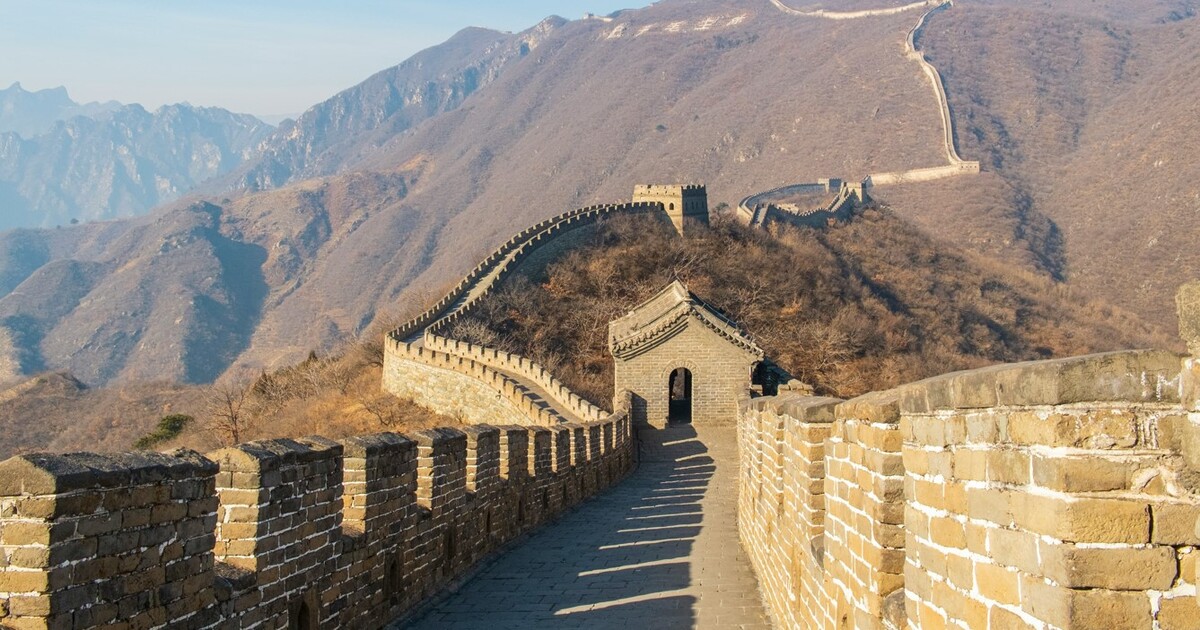Borderlands of Resistance: The Re‑Mapping of Global Geopolitics
Criminal organizations and militant groups turn geography into a strategic bulwark. This weaponization of geography undermines state authority and demands inventive, terrain-aware security solutions.
May 2, 2025

A Strategic Intervention Paper (SIP) from the Global Ideas Center
You may quote from this text, provided you mention the name of the author and reference it as a new Strategic Intervention Paper (SIP) published by the Global Ideas Center in Berlin on The Globalist.
Terrain is no passive stage for conflict — it is a political actor. Non-state actors exploit geography to erode governance, challenge borders and redraw spheres of influence.
These actors mastery of territory enables de facto sovereignty over resource-rich or strategically vital zones, hollowing out state authority and complicating international alliances.
The interplay between geography and governance emerges as a defining struggle of 21st-century statecraft.
A historical struggle
For thousands of years, rulers and strategists have understood that terrain itself can provide a decisive advantage. In antiquity, mountain ranges like the Himalayas and the Alps served as natural bulwarks against invaders, shaping the fates of empires.
The Great Wall of China, constructed across arid steppes and rugged hills, exemplifies how human labor was marshalled to augment the defensive utility of topography.
Likewise, river valleys — fertile yet easily controlled corridors — became the cradle of early states: The Nile in Egypt, the Tigris and Euphrates in Mesopotamia and the Indus in South Asia.
These waterways not only sustained agriculture and trade but also delineated spheres of influence, prompting treaties and wars over riparian rights long before the advent of modern international law.
During the medieval and early modern periods, fortified high ground and natural chokepoints dictated the ebb and flow of power. Castles perched atop rocky promontories or hilltops could withstand protracted sieges, compelling besieging armies to commit vast resources or devise inventive means of circumvention.
Strategic advantages
Control of narrow passes — such as Thermopylae in Greece or the Khyber Pass between Afghanistan and the Indian subcontinent — allowed smaller forces to hold at bay numerically superior foes.
At sea, archipelagos and straits, from the English Channel to the Sea of Marmara, were jealously guarded. Naval powers invested in fortifications and fleets to monitor shipping lanes, exact tolls and project influence far beyond their shores.
In the age of empire and global trade, geography remained central to political ambition. European powers raced to secure coaling stations, ports and hinterlands along strategic maritime routes, culminating in the carving up of Africa and Asia.
The Suez and Panama Canals underscored how the manipulation of land could transform international trade — and thereby the balance of power — overnight.
More recently, pipelines traversing mountains and steppes, and undersea cables spanning oceans, reveal that even in an era of digital connectivity and air mobility, the physical geography of resources and infrastructure still dictates alliances, dependencies and contestations.
Regardless the period, the mastery — or the denial — of geography has been as decisive as any army or treaty in the theater of political struggle.
Mexico: Desert governance and cartel sovereignty
In northern Mexico, the Sonoran and Chihuahuan deserts function as narco-fiefdoms, where cartels exploit sparse state presence to establish parallel governance.
By controlling smuggling routes and clandestine airstrips, groups like the Sinaloa Cartel dictate terms to marginalized communities, offering protection and rudimentary services in exchange for loyalty.
This erodes the Mexican state’s legitimacy, particularly in indigenous regions long neglected by central authorities.
The resulting governance vacuum enables cartels to project power into local politics, manipulating elections and intimidating officials — a dynamic that fuels cycles of corruption and impunity.
Colombia: Rainforests and insurgent state-building
Colombia’s Amazon and Orinoco basins exemplify how geography facilitates insurgent state-building. Former FARC dissidents and the National Liberation Army (ELN) leverage dense rainforests to govern remote territories, imposing taxes, resolving disputes and regulating coca production.
These zones operate as quasi-autonomous enclaves, undermining Bogotá’s sovereignty and complicating peace processes.
The state’s inability to penetrate these regions weakens its international standing, as drug flows and deforestation draw censure from global powers.
Here, terrain becomes a geopolitical liability, entrenching Colombia’s reliance on U.S.-backed militarized interventions that often alienate rural populations.
Central America: The Darién Gap as a migratory flashpoint
In Central America, the Darién Gap — a patch of untamed jungle between Colombia and Panama — has become a migratory corridor controlled by cartels and paramilitaries.
By monetizing human trafficking, these groups exploit weak regional governance, turning an ecological buffer into a geopolitical flashpoint.
This challenges the Panamanian and Costa Rican governments’ capacity to manage borders, straining diplomatic relations with the United States and the EU, which demand stricter migration controls.
Middle Eastern fractures: Insurgent topographies and regional proxy wars
The Syrian desert, stretching into Iraq’s Anbar province, serves as a sanctuary for ISIS remnants and smuggling networks. These arid zones enable cross-border insurgent mobility, undermining efforts by Damascus and Baghdad to consolidate post-conflict authority.
Control of desert oil routes becomes a proxy for influence, with Russia, Iran and the United States battling to dominate territory that funds competing power centers.
The persistence of such groups perpetuates regional instability, inviting interventions that fragment governance further.
Lebanon: Hezbollah’s mountain fortress
Hezbollah’s entrenchment in Lebanon’s Mount Lebanon range illustrates how topography amplifies non-state political power.
The group’s tunnel networks and mountain observatories render it a state-within-a-state, capable of vetoing government decisions and sparking conflicts with Israel.
This dynamic cripples Lebanon’s central institutions, perpetuating economic collapse and dependency on foreign aid.
The terrain’s strategic value also draws Iran deeper into Lebanese politics, turning the country into a battleground for Saudi-Iranian rivalry.
Yemen: Highlands and fractured statehood
In Yemen, the Houthis exploit the country’s mountainous north to withstand Saudi-led coalition assaults. The rugged landscape not only provides military cover but also symbolizes the group’s claim to represent Yemen’s marginalized highland communities.
This has allowed the Houthis to entrench a rival governance model, fracturing Yemen’s statehood and drawing Iran into the Arabian Peninsula’s security architecture.
Europe’s concealed battlegrounds: Transnational crime and the erosion of sovereignty
The Balkan routes — a lattice of mountain passes and river valleys — remain arteries for drug and migrant smuggling, exploiting weak governance in Bosnia, Serbia and Kosovo.
Criminal networks collude with corrupt officials to bypass EU border checks, undermining the bloc’s cohesion and fueling nativist politics in member states.
This terrain-driven lawlessness complicates the EU’s enlargement policy, as aspirant countries face demands to secure borders that geography renders indefensible.
Southern Europe: Mafia strongholds and subverted sovereignty
Southern Italy’s Calabrian highlands, with their isolated “ndrine” (clan) strongholds, epitomize how terrain sustains parallel governance. The “Ndrangheta” mafia leverages topographical seclusion to infiltrate local governments, manipulating public contracts and welfare systems.
This subverts Italy’s democratic institutions, fostering voter apathy and distrust in the state — a crisis exploited by populist parties to push for decentralization.
Similarly, Spain’s Galician rias (coastal inlets), ideal for cocaine smuggling, have enabled cartels to corrupt port authorities, challenging Madrid’s control over its maritime borders.
Urban ports: Criminal exploitation of economic hubs
Urban centers like Antwerp and Rotterdam face a dual governance crisis: Their ports, critical to national economies, double as hubs for drug trafficking. Criminal networks exploit logistical complexity and bureaucratic rivalries between customs, police and municipal authorities.
This not only undermines the rule of law but also strains EU member states’ relations, as governments accuse neighbors of inadequate border enforcement.
Interwoven strategies: Geography as a globalized tool of resistance
From Mexico’s sierras to Lebanon’s valleys, non-state actors employ a shared playbook: Manipulate terrain to create governance vacuums, then fill them with alternate authority.
This globalized resistance erodes the Westphalian model of state sovereignty, particularly in regions where borders were arbitrarily imposed.
Cartels and militias increasingly collaborate across continents, sharing tactics to exploit common geographical features — a trend accelerated by digital communication.
Global geopolitical repercussions
Such strategies carry stark geopolitical implications. For the United States, Mexico’s lawless hinterlands threaten regional security, necessitating cooperation with Mexican authorities that often clashes with domestic anti-interventionist sentiment.
In the Middle East, the weaponization of desert and mountain corridors draws external powers into proxy conflicts, as seen in Syria’s oilfields or Yemen’s highlands.
For Europe, the criminalization of peripheral zones undermines EU integration, emboldening anti-Brussels factions who frame centralization as ineffective.
Implications for statecraft: Reclaiming geography, reinventing governance
States must recognize that countering terrain-savvy adversaries requires reimagining sovereignty. Militarized responses alone fail. Instead, governments must integrate environmental and social policies to reclaim marginalized regions.
Colombia’s limited success in offering coca farmers legal livelihoods highlights the potential — and pitfalls — of such approaches. Similarly, Mexico’s struggles to extend judicial and healthcare services into cartel-dominated areas underscore the need for holistic state-building.
International cooperation vs. nationalist agendas
Geopolitically, controlling contested territory demands international cooperation often at odds with nationalist agendas. The EU’s Frontex agency, for instance, faces resistance from member states wary of ceding border control.
Conversely, China’s Belt and Road Initiative illustrates how infrastructure investments can extend state influence into rugged regions — a model with mixed ethical implications.
Conclusion
From the Amazon’s canopies to Antwerp’s docks, geography remains a decisive factor in the struggle between states and non-state challengers. The geopolitical implications are profound: Control of these landscapes determines resource flows, migration patterns and the viability of international alliances.
For governments, the imperative is clear — reclaiming land demands not just military prowess but political vision, transforming contested terrains from zones of resistance into arenas of renewed state legitimacy.
Achieving this will necessitate cross‑sector collaboration, melding infrastructure investment with community engagement. It demands adaptive governance capable of responding to shifting environmental and social contours.
Only by integrating land into policy architecture can states pre‑empt non‑state usurpation and ensure resilient sovereignty.
Ignore geography at your own peril. Strategic blindness can fracture alliances and ignite conflicts with lasting global repercussions.
Takeaways
Criminal organizations and militant groups turn geography into a strategic bulwark. This weaponization of geography undermines state authority and demands inventive, terrain-aware security solutions.
Terrain is no passive stage for conflict — it is a political actor. Non-state actors exploit geography to erode governance, challenge borders and redraw spheres of influence.
The interplay between geography and governance emerges as a defining struggle of 21st-century statecraft.
From Mexico’s sierras to Lebanon’s valleys, non-state actors employ a shared playbook: Manipulate terrain to create governance vacuums, then fill them with alternate authority.
Cartels and militias increasingly collaborate across continents, sharing tactics to exploit common geographical features — a trend accelerated by digital communication.
States must recognize that countering terrain-savvy adversaries requires reimagining sovereignty.
From the Amazon’s canopies to Antwerp’s docks, geography remains a decisive factor in the struggle between states and non-state challengers.
Ignore geography at your own peril; Strategic blindness can fracture alliances and ignite conflicts with lasting global repercussions.
A Strategic Intervention Paper (SIP) from the Global Ideas Center
You may quote from this text, provided you mention the name of the author and reference it as a new Strategic Intervention Paper (SIP) published by the Global Ideas Center in Berlin on The Globalist.
Read previous

Just The Facts
Hungary: Economic Mirage
April 30, 2025

